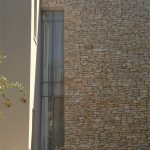Introduction
Cultured stone panels have become a popular choice for homeowners, architects, and designers looking to add a touch of elegance and sophistication to their spaces. These versatile panels mimic the look and feel of natural stone, providing a cost-effective and durable alternative for various applications. In this article, we will explore the evolution, advantages, and applications of cultured stone panels in detail.
Evolution of Cultured Stone Panels
Cultured stone panels, also known as manufactured stone veneer, have come a long way since their inception. Originally developed in the mid-20th century as a lightweight and affordable alternative to natural stone, cultured stone panels have undergone significant advancements in terms of aesthetics, durability, and sustainability.
Early versions of cultured stone panels were primarily made from concrete and aggregate materials that were molded and colored to resemble natural stone. While these panels offered a cost-effective solution for homeowners and builders, they lacked the authenticity and durability of real stone. Over time, manufacturers began experimenting with new materials and production techniques to improve the quality and appearance of cultured stone panels.
https://www.fs-slate.com/mosaic/ , cultured stone panels are made from a blend of cement, aggregates, and iron oxides to create a realistic stone-like appearance. Advanced manufacturing processes such as hand-crafting, molding, and coloring techniques have allowed manufacturers to replicate the intricate textures, colors, and patterns found in natural stone. As a result, cultured stone panels have become almost indistinguishable from their natural counterparts, making them a popular choice for both residential and commercial projects.
Advantages of Cultured Stone Panels
Cultured stone panels offer a wide range of advantages over natural stone and other building materials. Some of the key benefits of using cultured stone panels include:
1. Cost-Effective: Cultured stone panels are more affordable than natural stone, making them an attractive option for budget-conscious homeowners and builders. The manufacturing process for cultured stone panels is less labor-intensive and time-consuming, resulting in lower production costs compared to natural stone.
2. Lightweight: Cultured stone panels are lightweight and easy to install, reducing the need for structural modifications and heavy machinery during the installation process. This makes them an ideal choice for both interior and exterior applications where weight restrictions may be a concern.
3. Variety of Styles and Colors: Cultured stone panels are available in a wide range of styles, colors, and textures to suit any design aesthetic. Whether you prefer the look of rustic cobblestone, sleek modern slate, or classic brick, there is a cultured stone panel option to match your preferences.
4. Durability: Despite being lighter than natural stone, cultured stone panels are highly durable and weather-resistant. They are engineered to withstand the elements, including extreme temperatures, UV exposure, moisture, and impact, making them a long-lasting and low-maintenance building material.
5. Easy Maintenance: Cultured stone panels require minimal maintenance to keep them looking their best. Regular cleaning with a mild detergent and water is usually sufficient to remove dirt, grime, and other debris. Additionally, the color and texture of cultured stone panels are designed to be fade-resistant, ensuring a lasting finish over time.
6. Versatility: Cultured stone panels can be used in a variety of applications, including exterior facades, interior accent walls, fireplaces, and landscaping features. Their lightweight and flexible nature allow for easy customization and installation in virtually any space.
Applications of Cultured Stone Panels

Cultured stone panels are a versatile building material that can be used in a wide range of applications. Some popular uses of cultured stone panels include:
1. Exterior Facades: Cultured stone panels are commonly used to enhance the exterior appearance of residential homes, commercial buildings, and other structures. They can be installed as cladding on the facade to create a striking and durable finish that mimics the look of natural stone.
2. Interior Accent Walls: Cultured stone panels are an excellent choice for creating focal points and accent walls in interior spaces. Whether used in living rooms, dining areas, bedrooms, or entryways, cultured stone panels add texture, warmth, and visual interest to any room.
3. Fireplaces: Cultured stone panels are a popular choice for fireplace surrounds and mantels. Their heat-resistant properties make them a safe and stylish option for adding a touch of elegance and charm to any fireplace design.
4. Landscaping Features: Cultured stone panels can be used to create stunning landscaping features such as retaining walls, garden borders, and outdoor kitchens. Their natural appearance blends seamlessly with outdoor environments, adding beauty and functionality to outdoor living spaces.
5. Commercial Projects: Cultured stone panels are widely used in commercial projects such as retail stores, restaurants, hotels, and office buildings. Their versatility, durability, and aesthetic appeal make them a preferred choice for architects and designers looking to make a statement with their designs.
Conclusion
Cultured stone panels have evolved into a sophisticated and versatile building material that offers numerous advantages over natural stone and other alternatives. With their realistic appearance, durability, cost-effectiveness, and ease of installation, cultured stone panels have become a popular choice for a wide range of applications in residential and commercial construction. Whether used for exterior facades, interior accent walls, fireplaces, or landscaping features, cultured stone panels provide a timeless and elegant solution for enhancing the beauty and functionality of any space.
